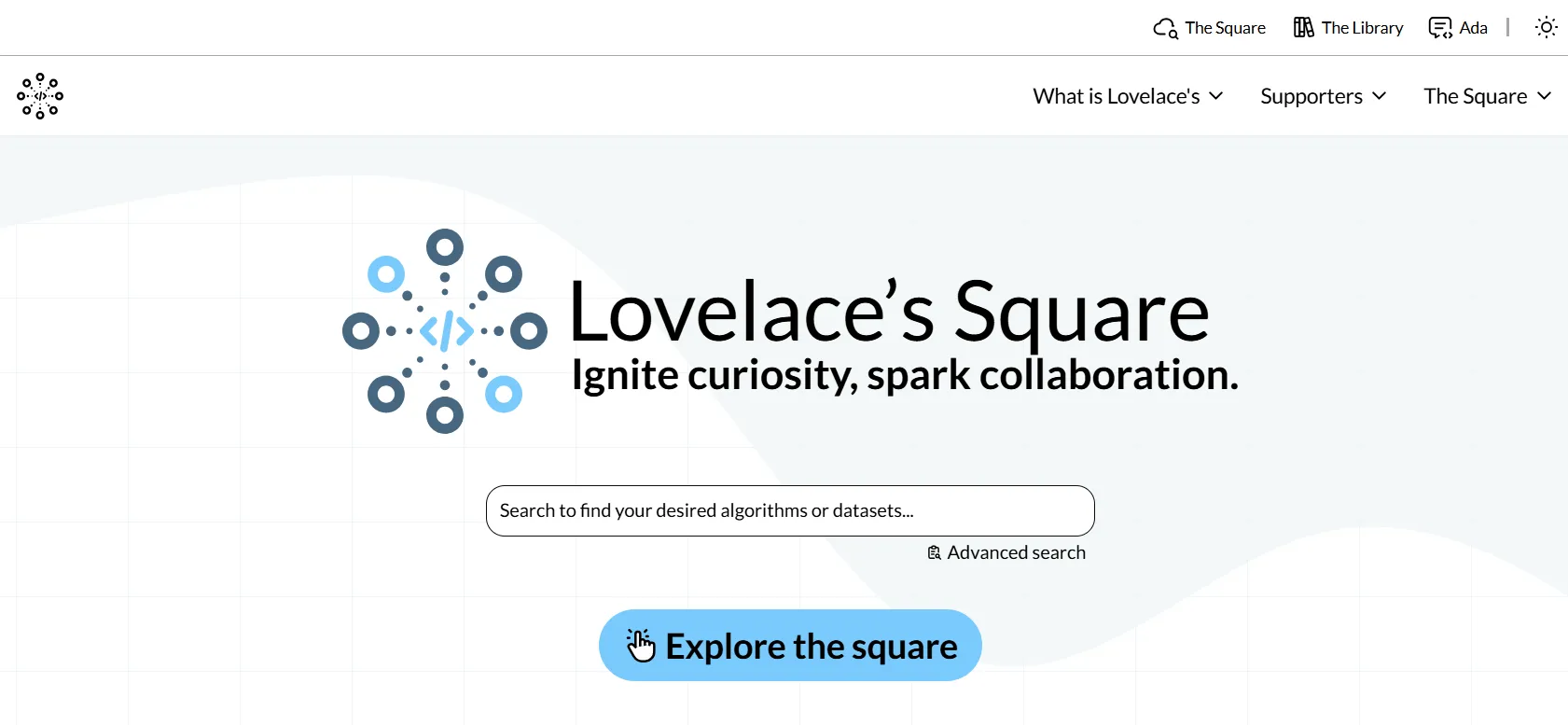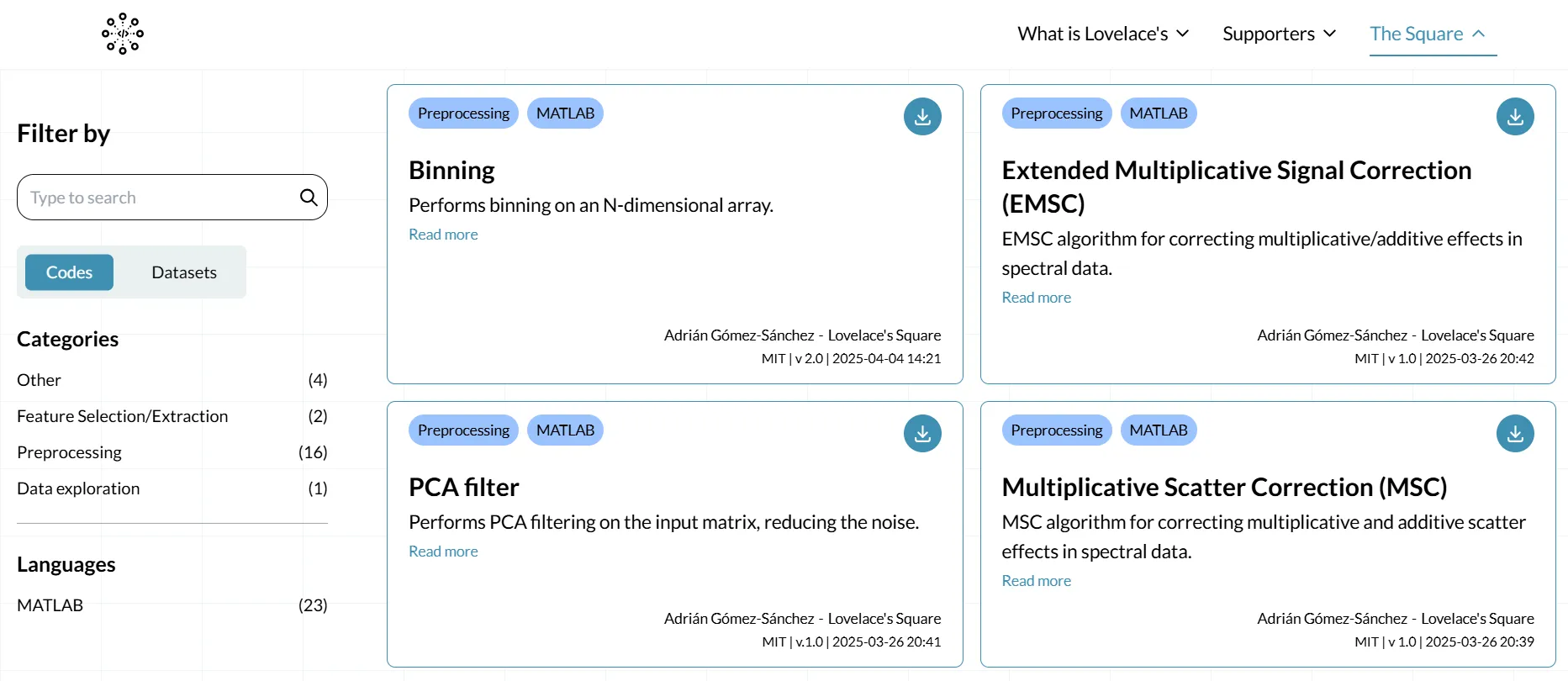One-Stop hub
All the core chemometric methods in one place. From classics like PCA and PLS to newer techniques and real datasets for practice. No more searching across the internet.
Imagine a busy town square where scientists, students, professors and data lovers meet to share their best ideas and tools, just like sharing a cup of coffee. The Square is our online version of that kind of place. It is a friendly space where people from around the world come together to exchange code, datasets, and smart ways to work with chemical data. Everything is free and open, so you can explore, use, or even improve what others have shared.
In simple terms, The Square is the central repository of Lovelace’s Square, one of the platform’s three main pillars, alongside The Library (learning materials) and Ada (an AI assistant). It is the platform’s technical core, focused on the doing part of data analysis.
We know the struggle. For years, many powerful chemometric methods were locked away in expensive proprietary software, far out of reach for students or labs on a tight budget. New techniques often appear in scattered code repositories with little documentation, which makes them hard to learn or trust. The Square removes those barriers and brings everything into one open, easy-to-access space.
We call it “The Square” because we imagined it like a public square: a place where people gather to share, collaborate, and innovate. We are not promising to change the world overnight, but we do hope to make life a little easier (and maybe more fun) for anyone working with chemical data. So bring your curiosity, maybe a cup of coffee, and come join us in The Square 😄.
At Lovelace’s Square, you can find community-contributed code and datasets, all freely available under open-source licenses such as MIT. The most restrictive license you might encounter is free use, modifiy and share for non-commerical purposes (CC-BY-NC 4.0 or similar). However, we strongly encourage the community to share code and datasets in a fully open-source manner.
This means you are free to explore the code, use it in your own projects, adapt it to your needs, and share it with others. Nothing is hidden or locked away. Each method and dataset includes clear explanations, practical examples, and scientific references, making the platform not only easy to use but also reliable and reproducible for real scientific work.
One-Stop hub
All the core chemometric methods in one place. From classics like PCA and PLS to newer techniques and real datasets for practice. No more searching across the internet.
Completely Open
Every tool and dataset is free under permissive licenses (like MIT). You can read the code, use it, change it, and share it without worries.
Zero barriers
The Square runs in your browser with no installation, no registration, and no paywalls. Just click and start exploring.
Reliable & reproducible
Each method or dataset comes with clear documentation and scientific references. Nothing is a black box.
The Square is built on two important ideas: open science and working together as a community. We believe science should be open to everyone. When tools and data are free to use, research becomes easier to repeat, improve, and share. This helps science grow faster and become more fair.
But open science only works when people take part. That is why The Square grows with help from its community. If you are a researcher with a new method or a student who found a useful dataset, your contribution is welcome and valuable.
Here you can find a quick explanation of how to navigate through The Square.
Open the homepage
Go to https://lovelacesquare.org.

Here, you can access several sections:
Browse The Square
Click Explore The Square banner or visit https://lovelacesquare.org/the-square.

In The Square you can:
Upload code or data
Before submitting, please read the following pages carefully:
After reading the documentation, you can access the upload forms:
For Code Contributions:
For Dataset Contributions:
Our team reviews every entry for clarity, licensing, and reproducibility before it goes live!
In the end, The Square is here to make useful chemometric tools and data available to everyone. We are not promising to change the world overnight, but we do hope to make life a little easier (and maybe more fun) for anyone working with chemical data.
So bring your curiosity, maybe a cup of coffee, and come join us in The Square☕️